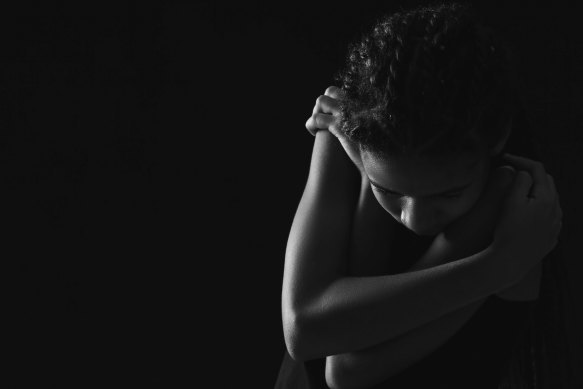‘Horrifying’: Alarm over NSW’s child protection failures
A scathing report has found the NSW government is failing to meet any of its child protection responsibilities, with children cycling through temporary and emergency accommodation and the department not properly responding to serious allegations of abuse.
The NSW Ombudsman’s report, which has been labelled as “horrifying” by child welfare advocates, is the fourth damning report in as many months into the Department of Communities and Justice’s child protection services.
The Ombudsman found 75 per cent of children reported to be at risk of harm were not visited by a caseworker, prompting the watchdog to launch a maladministration investigation into the department’s response to these reports.

The Department of Communities and Justice has failed to meet any of its three core protection responsibilities, the report found. Credit: Adobe Stock
Department staff screen risk-of-harm reports to determine whether they meet a threshold of “significant harm”, which includes allegations of sexual abuse, serious physical abuse or serious neglect.
Just a quarter of children reported as at risk of significant harm received a face-to-face visit by a caseworker in 2022-23, down from 29 per cent in 2017-18, the Ombudsman found. Aboriginal children were four times more likely to be involved in risk of significant harm reports as non-Aboriginal children.
The report also found children are being left in limbo in the out-of-home care system without plans to find them permanent homes through family restoration, guardianship or adoption.
Just 13 per cent of children had a “permanency goal”, which means there are plans in place for their return to their families or for guardianship or adoption with a foster family, down from 17 per cent in June 2020.
In the five years to June 2023, adoption rates decreased by 57 per cent, exits to a permanent home declined by 19 per cent, and family restoration decreased by 22 per cent.
Instead, these children are placed in residential care or emergency accommodation such as hotels and motels. The report also found that one in three children had a substantiated allegation of abuse while in residential care.
The Ombudsman’s report, tabled in state parliament earlier this month, concluded that the department had failed to meet any of its core responsibilities of responding to harm reports, securing safe and permanent homes, and intervening early to prevent risk escalation.
“[The department] cannot demonstrate that it is meeting any of its three core child protection responsibilities: to respond to any child reported at risk of significant harm (ROSH) who requires an investigation, to improve the safety and wellbeing of children in out-of-home care and secure safe, permanent homes for them, and to intervene early to prevent escalation of risk of harm to children, and keep families together,” the report said.
Families and Communities Minister Kate Washington has previously acknowledged issues in the sector, identifying reform of the state’s child protection system as a priority along with the need for more foster carers.
“The findings of the NSW Ombudsman’s report confirm everything we’ve been saying since we came into government – that the child protection system is in need of significant structural reform,” she said.
The children’s advocate Zoe Robinson said the report was another in a series of “forceful” reports outlining the impact the out-of-home care system had on children and young people.
“These reports are incredibly blunt in addressing the harms presented to children,” Robinson said. “Conversations need to be had about how to best achieve outcomes that put children and young people’s best interests centre.”
Robinson said she wanted every child in care to be given a welfare and wellbeing check, and to have an opportunity to share their experience.
“We do not have consistent access to the children,” she said.
Adopt Change chief executive Renee Carter said the report was “horrifying”, and stressed that children should be supported to return to their families or placed in family-based care.
“A system cannot raise children, and a system can’t be a parent,” Carter said. “There’s no decrease in the interest in adoption, but families can’t be referred to adoption agencies because permanency goals and case plans are not being set in the first place.
“There also isn’t a commitment to assessing children’s mental health, the impact of their trauma, and funding the healing that goes into that … which leads to placement breakdowns.”
The number of children who had healthcare plans devised by the department decreased by 21 per cent between 2018-19 and 2022-23. These plans are supposed to be reviewed annually, but just 17 per cent of children had a review last year.
The deputy chief executive of out-of-home care lived experience advocacy body CREATE Foundation, Imogen Edeson, called the report “sobering and damning”.
“It raises critical concerns about the safety, stability and wellbeing of children in care in NSW, and it points to the urgent need for reform,” Edeson said. “There is too much at stake to delay reforming NSW’s child protection system.”
Last month NSW Auditor-General Bola Oyetunji found in two reports that the department had “failed in its duty of care” in assessing the mental health and wellbeing of children in its care, and had not effectively safeguarded the rights of Aboriginal children in the child protection system.
Children testified at an inquiry by the Advocate for Children and Young People in May that they felt like a dog being moved from “cage to cage” while in Alternative Care Arrangements. Others reported being sexually assaulted and exposed to rampant drug use.
In May, the government established an urgent review of the foster care system.
The outcomes of the Ombudsman’s maladministration investigation will be presented to Washington and the department head. If steps are not taken to rectify the potential maladministration, the Ombudsman can make a follow-up report to parliament and require the minister to provide a public explanation.
Start the day with a summary of the day’s most important and interesting stories, analysis and insights. Sign up for our Morning Edition newsletter.